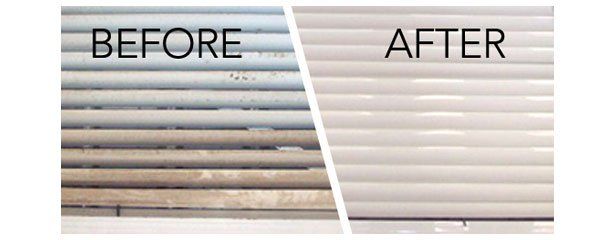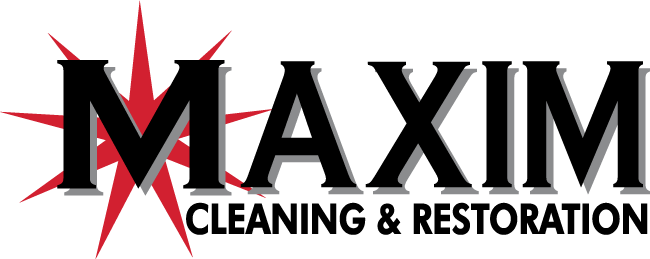Omaha, Council Bluffs, Fremont and the Surrounding Areas
Ultra Sonic Blind Cleaning in Omaha, NE
Established 1977 | Discounts Available | OSHA-Certified
Established 1977
Discounts Available
OSHA-Certified
Hours:

Best of Omaha for 11 Years and Counting!

What is Ultrasonic Blind Cleaning?
Ultrasonic blind cleaning has been around for decades. Here is a quick overview of the basics for those wishing to learn more about this method.
Simple Explanation:
Ultrasonic blind cleaning uses the energy of exploding air pockets in a water and mild soap cleaning solution in long narrow tanks to gently yet thoroughly remove dirt from EVERY surface of the immersed item. Ultrasonic machines are made in different frequencies and blind cleaners bring varying degrees of knowledge about the cleaning process and the items they are cleaning to any given situation. The results achieved by ultrasonic cleaning depend upon many variables - that improve when the right mix of knowledge, equipment, chemistry and conditions are blended.
Read the more technical explanation below if you want to see why an ultrasonic blind cleaner needs to know more than how to dunk a shade and collect money to do a good job. Even though the process isn't "rocket science", technical knowledge of the products cleaned, equipment and chemistry all make a BIG difference in the outcome.

Semi-Technical Explanation:
Without getting too technical, ultrasonic cleaning is based upon the effects produced by ultrasonic sound waves travelling through water. The compressions and rarefractions between the sound wave create gas pockets that expand and then implode throughout the solution. The agitation caused by these "exploding" bubbles provides the energy to gently yet effectively knock dirt and other debris off all surfaces immersed in the ultrasonic bath. The sound waves are produced by vibrations coming from transducers tuned to certain frequencies which are usually mounted in long flat box shaped pods inside the tank or underneath its lower surface. The transducers are powered by a generator(s) which provide the energy to make the transducers vibrate. Many newer machines allow the operator to change the intensity or speed of the cycles being generated through the transducers as appropriate to different cleaning situations.
The effectiveness of ultrasonic cleaning depends on a variety of factors. We’ll briefly touch upon several key points, hopefully, dispelling several common misconceptions along the way.
Several variables affect the actual power of any ultrasonic cleaner. Mechanically, the type of machine used and the actual power of the generator (relative to the amount of water and type of the materials to be cleaned) determines the available energy that is going to be available for cleaning. For blind cleaning a frequency of 40 MHz is popular as it provides a reasonable combination in both size and number of ultrasonic events produced in the cleaning solution (cavitation events, etc.) Some machines use a more aggressive 25MHz while others may have transducers for two different frequencies ( 40MHz and 65Mhz or higher) to provide a mix of aggressive power and fine particle removal. Many machines also allow the operator to change the intensity of the power so that ultrasonics can be very gentle for delicate items and more aggressive when appropriate.
Regardless of the mechanical potential available, the effectiveness of the ultrasonic cleaning is affected by the amount of water in the tank, its quality and the type of soap that is used. While ultrasonic cleaners will nominally work with various cleaners, the best results are achieved by using a soap designed specifically for ultrasonic cleaning. Just like an engine runs best on the recommended blend of fuel, blinds designed to produce the right environment for good ultrasonic action and effective cleaning under ultrasonic conditions make a difference.
Finally, time is an important component in the blind cleaning equation. If one were to dip a nicotine stained vinyl vertical in the ultrasonic tank, within moments wisps of smudgy yellow grime would be observed floating off into the water. Effective ultrasonic blind cleaning requires attention to the items being cleaned and the degree and type of soiling involved. While most of the dirt is removed in the first minute or less of immersion in the cleaning tank of the ultrasonic machine, fabrics absorb more energy than hard objects and respond at different speeds. As the cavitation process is mildly abrasive over time is it possible to damage paints or specialty finishes if items are exposed to strong ultrasonics for a long period of time. A typical mini blind can be cleaned multiple times without any observable or significant damage.
Often ultrasonic cleaning gets blamed for damaging blinds when the technician’s poor technique or neglecting to remove the shade promptly was actually at fault. Similarly one could damage blinds with hand cleaning methods using an aggressive brush, harsh cleaners or by applying too much energy to the process. Another common misconception is that ultrasonic cleaning may cause fabric blinds to fall apart.
As ultrasonic cleaning involves water immersion, it is important to limit its application to materials that can safely be immersed in water. The ultrasonics aren't the problem if fabrics shrink, glues fail, or dyes run - it was their incompatibility with the water that probably caused the problem. While most hard blinds and many fabric blinds can be effectively and efficiently cleaned using this method, with fabric shades come some pre-qualifications. The age of the shade (sun weakened fabrics, glues crystalized with age, etc.) and the type of soiling present may limit what (if anything) can be done in terms of ultrasonic cleaning. Room darkening honeycomb shades with foil liners (or water sensitive glues) may be damaged by ultrasonic cleaning (the cavitation erosion will literally dissolve holes in a piece of aluminum foil in less than 20 seconds).
All this being said, ultrasonic blind cleaning when harnessed properly under the care of an attentive cleaning technician can be used to do amazing things. As the ultrasonics penetrate to efficiently yet effectively clean EVERY surface of the immersed item the deep cleaning results achieved are unparalleled when supported by the right cleaning procedures. Typically, a blind or shade is immersed in the ultrasonics, rinsed and then partially or fully dried before it is hung back in the window. The ultrasonic cleaner may bring their machine with them to the job site in a truck or trailer or transport the items back to a shop for cleaning.
In closing, it is also worth repeating that problems with fabrics puckering, glue lines failing or the delamination of room darkening shades are related to deficiencies in the product or cleaning procedures, not the ultrasonic specifically. Using the services of a knowledgeable, professionally minded blind cleaner is important. They should for instance know the difference between the Silhouettes or how to handle Luminettes or even how to efficiently clean well over a hundred mini blinds per day, if necessary. They will also know which cleaning chemistry is best for treating different types of blinds, fabrics, or soil conditions.
What kinds of window blinds can we clean?
- Wood blinds
- Vinyl Blinds
- Venetian Blinds
- Vertical Blinds
- Silhouettes
- Micro Mini Blinds
- Mini Blinds
- Luminettes
- Roller Shades
- Pleated Shades
- Fabric Blinds
- Privacy Curtains
- Shades
- Shutters
- Curtains
Lower Your Risk of a House Fire
Call now for dryer vent cleaning services and ask about our discounts
(402) 241-8643
Everyone was very professional and friendly. They showed up right on time and talked me through the process of cleaning the vents. They gave me a price upfront and didn’t attempt to upcharge me or sneak in extra fees. They were incredibly thorough in their cleaning. I would highly recommend Maxim to anyone I know looking to have their air ducts cleaned!
- Austin
Your company and its representatives are the greatest. You arrived for your appointment in rural Burt county right on time, calling prior to the appointment. Your two representatives were very kind, accommodating, and knowledgeable. They went right to work to take care of our air duct problem and were kindly handling all my concerns, fears, and problems. They offered suggestions and were great workers. Your company is commended for the quality of the work your servicemen do and for your servicemen themselves. Very, very impressed and thankful.
- Judy
SERVING
Omaha , NE
and Surrounding Areas
All Credit Card payments are subject to a fee, that is non-negotiable, but we offer no fee with check payments.
HOURS
24/7 Emergency Services


Share On: